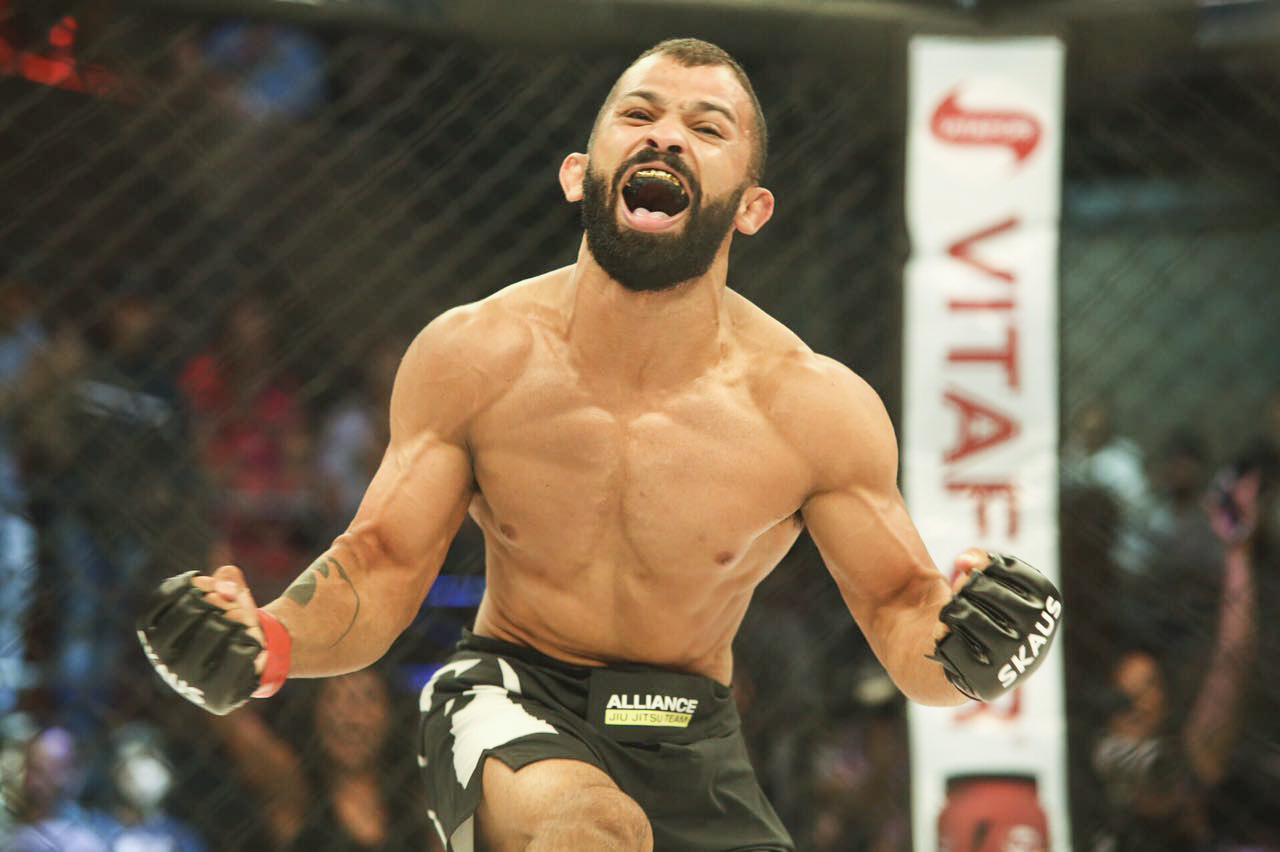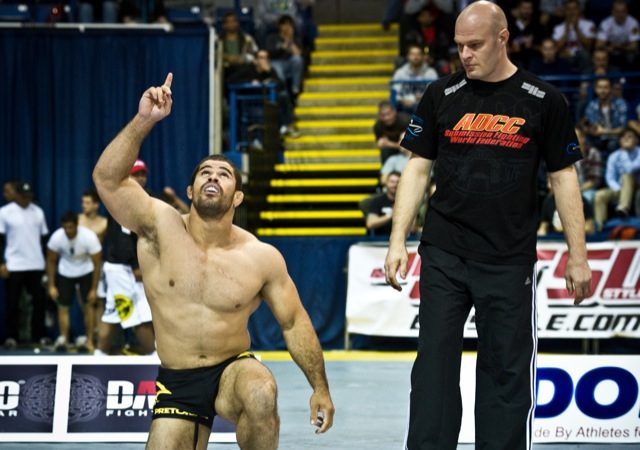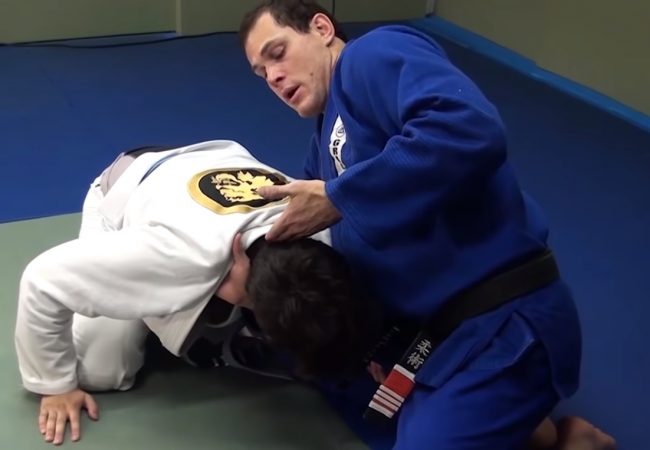
Malfacine debuted in MMA in Shooto in Rio, winning in R1. Eduardo Ferreira/ Gallerr
Late last month, Bruno Malfacine left his gi and nine gold medals from world championships at home and flew from Orlando to Rio de Janeiro on a mission: to test his MMA-focused jiu-jitsu before an audience at Shooto Brazil. And it was an impeccable debut for Alliance’s brave little one.
The roosterweight legend faced a more experienced MMA fighter in Romário Boaes and finished him via armbar in 1’34”. Bruno took him down, passed guard swiftly, but lost the mount. After landing on the bottom, he did some good work and caught an arm to notch his first win.
Recently Graciemag caught up with Malfacine to extract some of his newfound knowledge. It’s all yours if you keep reading.
GRACIEMAG: What did you feel on the ground, without the usual support points offered by the gi, and with punches flying?
BRUNO MALFACINE: Look, it’s not a jiu-jitsu I’m used to. It’s a somewhat different jiu-jitsu, an MMA-facing type — just like wrestling, Muay Thai and boxing are also adapted for MMA. It’s not just any BJJ world champion that could adapt to MMA rules. I’m learning a lot from Master Ricardo Libório and adapting in the best way my jiu-jitsu to MMA. I have a big advantage due to my traits that I’ve acquired in the sport — that is, the fact I play on top and am always aggressive, looking for the submission all the time.
What is the biggest obstacle to making BJJ lock into place and flow when the fists are flying?
Ever since they created my division in the UFC, I’ve been following every fight in my division. I always thought my BJJ was above the average that I saw in the Octagon, and I feel that I have some advantages to make my BJJ flow, just like I did in my fight in Shooto. However, the biggest challenge now is to connect the transitions very well with the ground-and-pound.
What did you learn from that moment you lost the mount?
I teach class to beginners at my gym, and I’ve understood all of the basic BJJ concept for defense for ages. When my opponent dominated my arm, I knew he could reverse to the same side my arm was dominated on. Therefore, I kept my base and used my free hand to hit him. That was when I lost balance and had to prop that hand on the ground, and at that moment he achieved control over the other arm and surprised me by reversing to the side I wasn’t expecting.
And what of your guard for MMA — is it similar to the one you use in competitive BJJ?
I think it necessary to make some modifications to the guard in order not to expose yourself so much, but the goal is the same as in BJJ. Due to nearly all of my opponents in BJJ being guard players, I became a passer. But I truly trust in my BJJ on the bottom, my defensive BJJ, and I feel pretty comfortable doing guard. I knew a finish was coming out of that position.
Any good stuff you’ve been learning from Libório at American Top Team that you can comment on?
Master Libório has been insisting that staying on the bottom in MMA is not always the best option. When I made the mistake and he reversed, I knew I had to finish soon — otherwise Libório was going to scold me hard. Thank God it all worked out!


